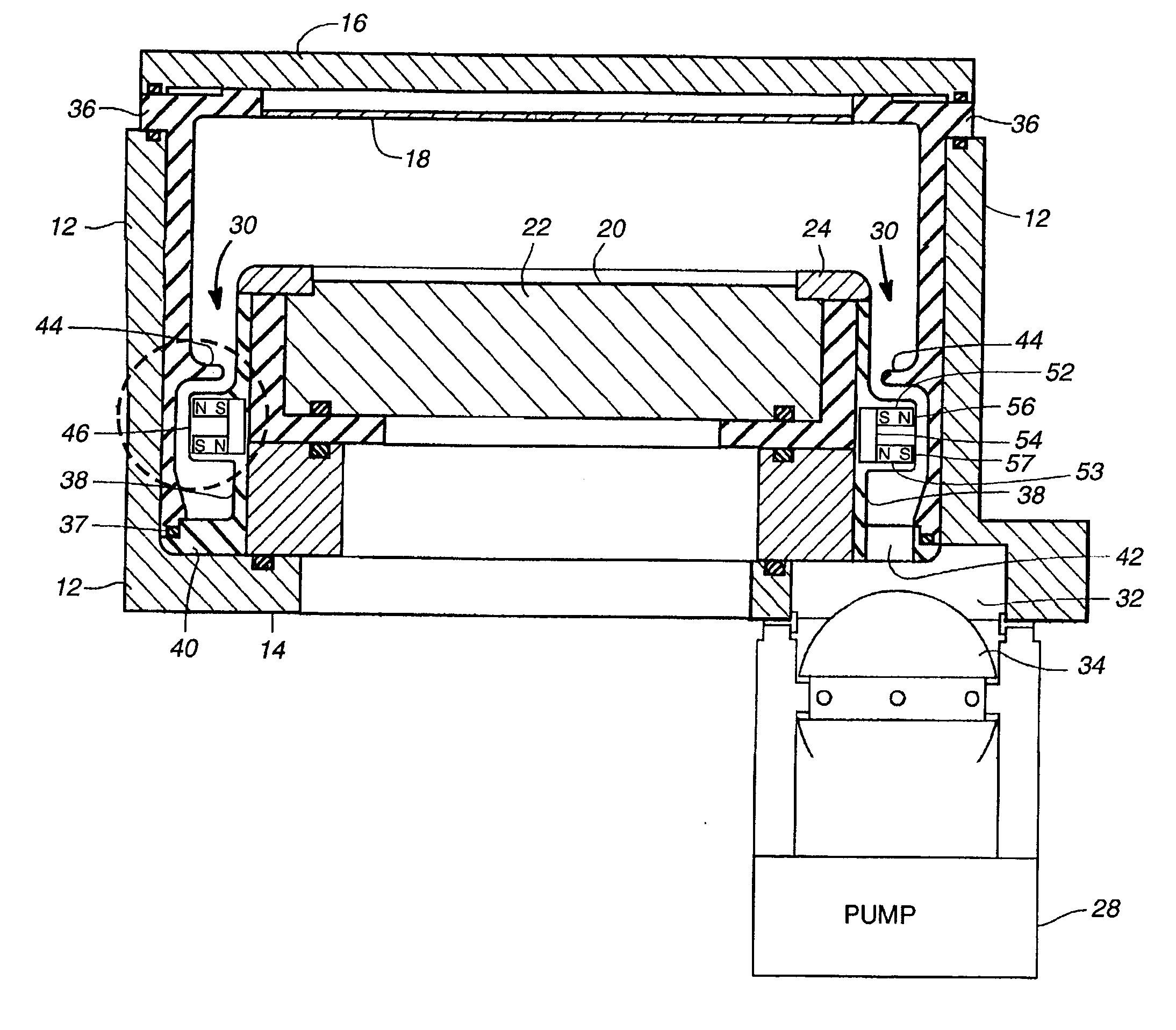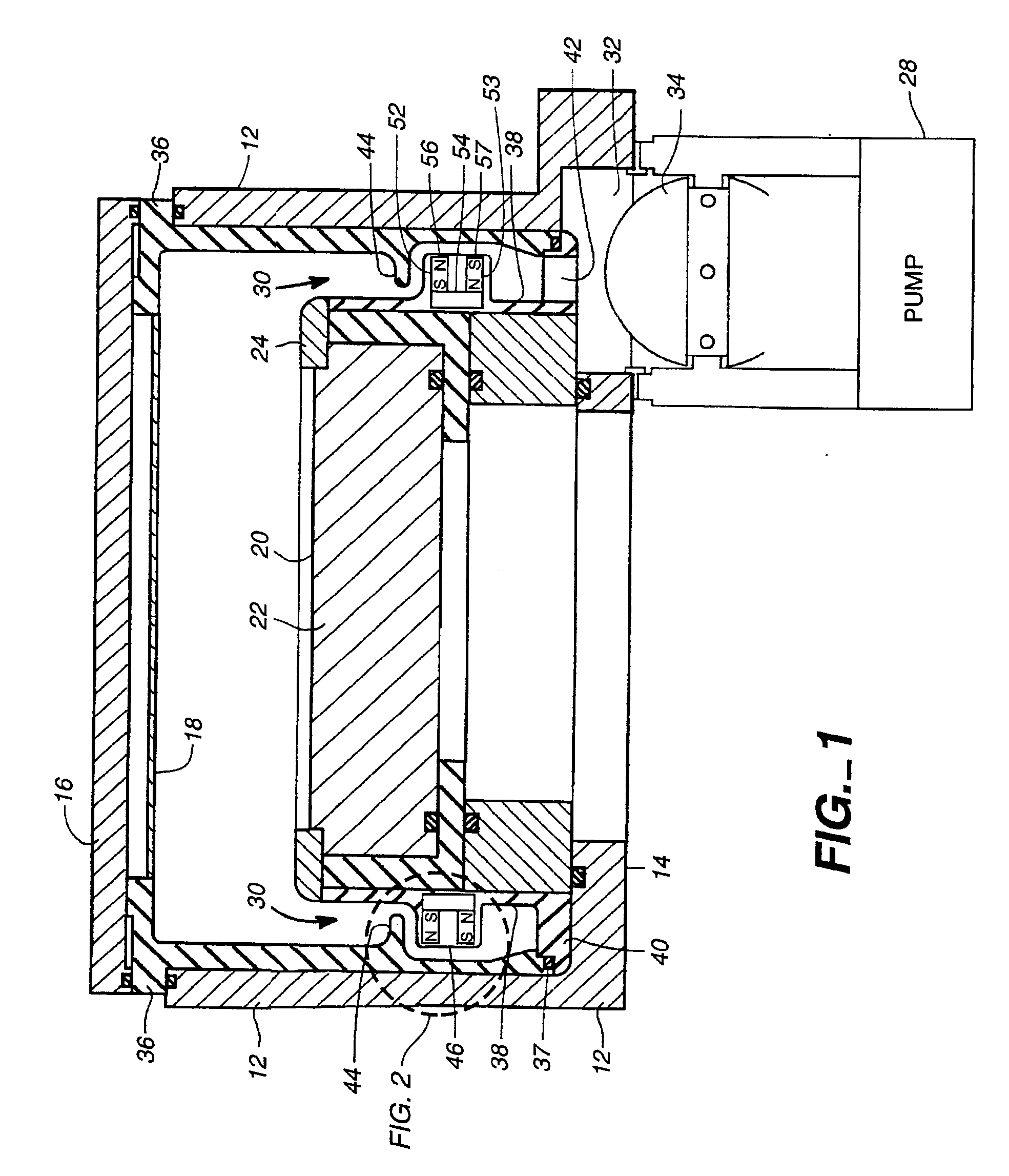Magnetic barrier for plasma in chamber exhaust
a technology of magnetic barrier and plasma chamber, which is applied in the field of plasma chambers, can solve the problems of unstable main plasma body adjacent to workpiece, inability to meet the requirements of plasma process, and general corrosion of component surfaces near the plasma body within the plasma chamber, so as to achieve effective plasma blockage, minimize the magnetic field, and design
- Summary
- Abstract
- Description
- Claims
- Application Information
AI Technical Summary
Benefits of technology
Problems solved by technology
Method used
Image
Examples
Embodiment Construction
1. Conventional Chamber Components
FIG. 1 shows one embodiment of the invention as applied to a plasma chamber suitable for either etching or chemical vapor deposition (CVD). The conventional components of the chamber will be described before describing the novel features for preventing the plasma from reaching the exhaust pump.
The illustrated chamber is cylindrical because it is adapted for processing a circular workpiece such as a semiconductor wafer. Alternatively, a chamber for processing a rectangular substrate conventionally would have a rectangular transverse cross section.
A cylindrical side wall 12, circular bottom wall 14, and annular top wall or lid 16 provide a vacuum tight enclosure for the chamber interior. A gas distribution plate 18, also called a diffuser or shower head, is mounted at the bottom of the lid 16. The gas distribution plate is perforated to function as a gas inlet through which process gases enter the chamber. The side wall 12 may be either dielectric or ...
PUM
| Property | Measurement | Unit |
|---|---|---|
| Magnetic field | aaaaa | aaaaa |
| Magnetic field | aaaaa | aaaaa |
| Magnetic field | aaaaa | aaaaa |
Abstract
Description
Claims
Application Information
 Login to View More
Login to View More - R&D
- Intellectual Property
- Life Sciences
- Materials
- Tech Scout
- Unparalleled Data Quality
- Higher Quality Content
- 60% Fewer Hallucinations
Browse by: Latest US Patents, China's latest patents, Technical Efficacy Thesaurus, Application Domain, Technology Topic, Popular Technical Reports.
© 2025 PatSnap. All rights reserved.Legal|Privacy policy|Modern Slavery Act Transparency Statement|Sitemap|About US| Contact US: help@patsnap.com



